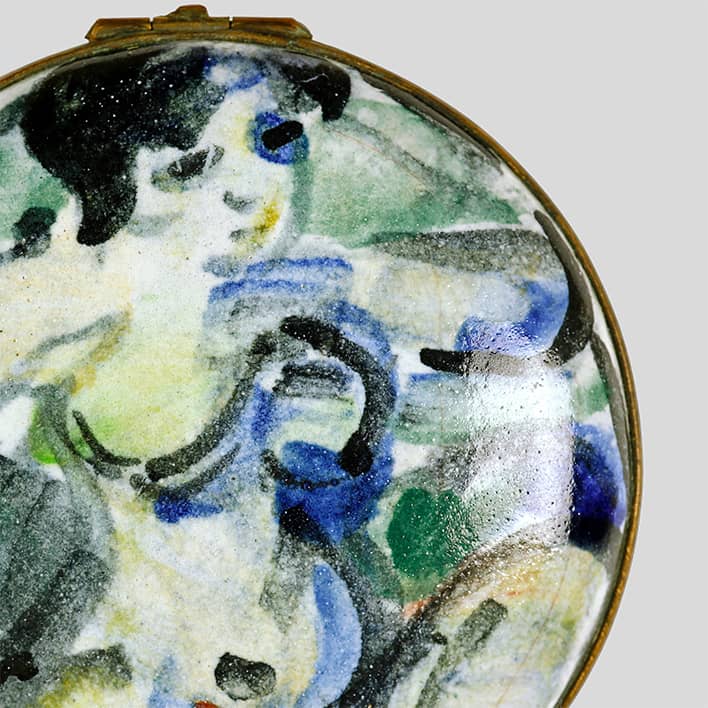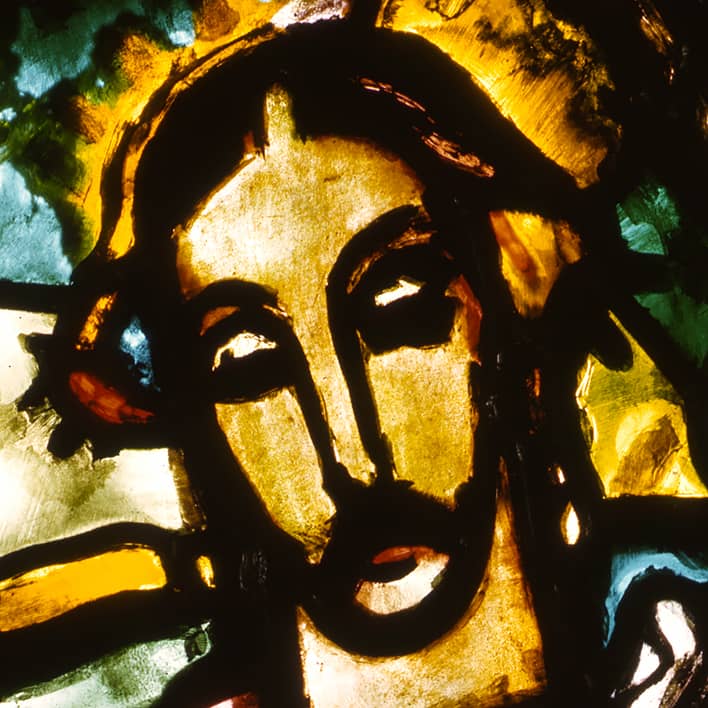Ceramics
Georges Rouault devoted himself to ceramics during a fruitful collaboration with André Metthey that would last from 1906 to 1913.
There was a particular fascination for this medium at the beginning of the 20th century. André Metthey invited artists to his studio in Asnières and provided them with shapes to decorate. At the 1907 Salon de l’Autonme, the ceramic artist submitted a selection of works that were the fruit of his collaboration with painters such as Maurice Denis, Maurice de Vlaminck, Maillol, Henri Matisse and of course Rouault.
On several occasions, Georges Rouault produced collections of ceramics which were exhibited at the Salon des Indépendants, the Salon d’Automne and the Galerie Druet.
Of all the objects Metthey offered, Rouault preferred working with plates. As Bernard Dorival explains, this was especially because “ their shape was like that of a painting ”, “…One could say therefore that these ceramics are simply paintings on earthenware that are then fired in the kiln… ” (extract of an article published in November 1950, no IX of Musées de France).
A retrospective exhibition The Ceramic Works of Rouault and the Fauvists in the studio of André Metthey at the Panasonic Shiodome Museum was held in Tokyo in 2015.
I think (…) in the middle of the massacres, the fires, the horrors, I have, from the cellar in which I was born, in my eyes and in my mind the fleeting matter which good fire fixes and incrusts.
G. Rouault to André Suarès, 27 April 1913, letter no 29, Correspondence Rouault – Suarès, NRF, Gallimard
We are not masters of the fire, say the kilnmen. No, certainly, and fortunately, that would be foolish. It is my master too but I look to obey, to use the fire, what it has given me…
What is lost, failed for many is not lost for me…I see blood-red suns or bluish moons of bruised silver…


Tapestries and stained glass
Between 1932 and 1938, Rouault’s works were translated into some fifteen tapestries by the Aubusson tapestry workshops under the artistic direction of Marie Cutely.
Cartoons and paintings by Rouault were translated into five stained-glass windows in 1945 by the Ateliers Hébert Stevens for the church of Notre Dame de Toute Grâce, in Plateau d’Assy in Haute-Savoie.
Build the church of the 20th century: such was the ambition of those who sought to change the conception of sacred art on the eve of the Second World War. Before the Chapelle de Ronchamp built by Le Corbuisier or the Vence church decorated by Matisse, the church of Plateau d’Assy in Savoie became the torchbearer in this crusade for contemporary religious art.
[…] While visiting an exhibition in June 1939 at the Petit Palais in Paris, Abbé Devémy came across a painting by Georges Rouault in oil on paper, which was to be made into a stained glass window. It was a representation of Christ entitled Passion. This work became the centrepiece of the church upon which the whole aesthetic was based. His expressive style, far from a typical naturalist representation, was reflected in the church’s design.
Christine Gouzi, Professor at the Sorbonne-Université, “ La querelle de l’Art sacré” L’Eglise d’Assy (1937-1950) ”, L’Objet d’Art, February 1921